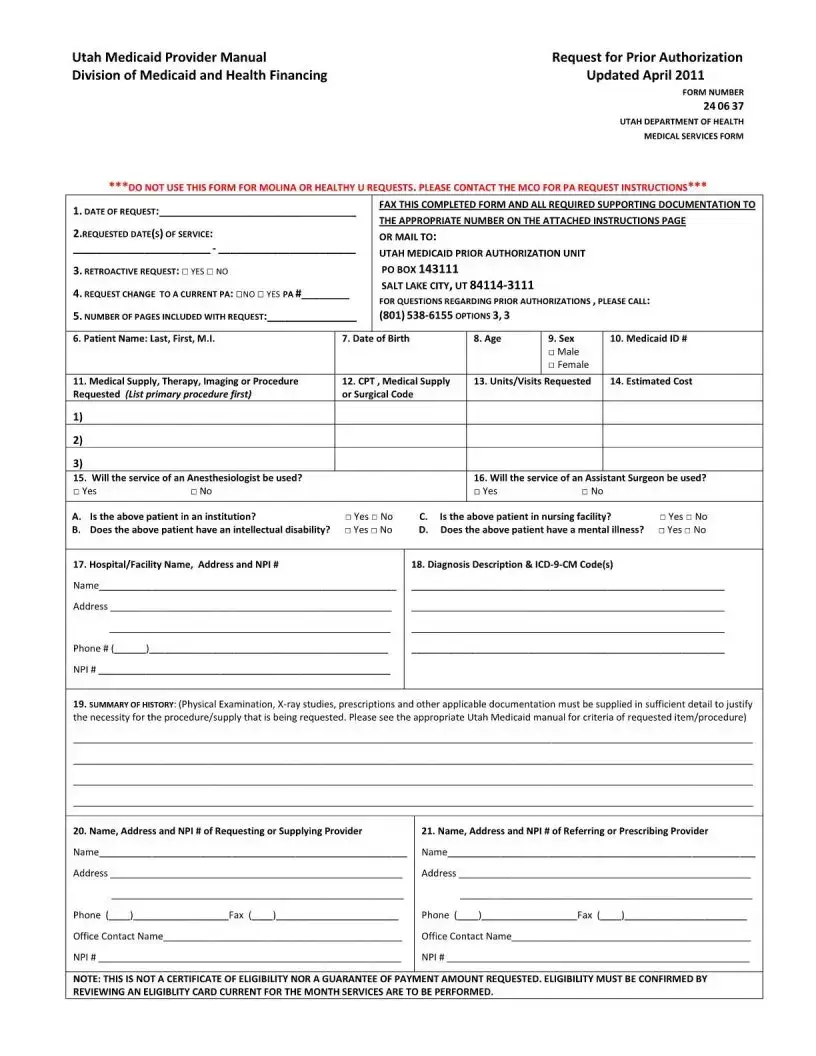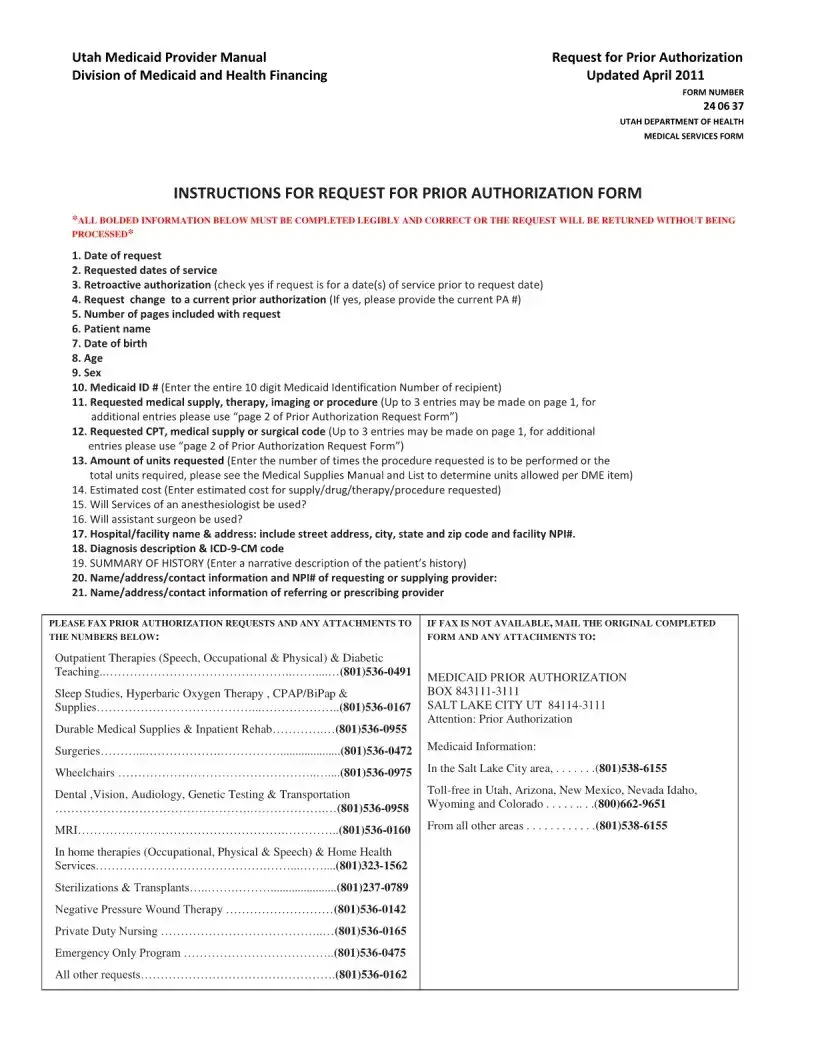-
What is the Utah 24 06 37 form?
This document is specific to the state of Utah and serves a particular purpose within its legal framework. While the name ’24 06 37’ suggests a form number or a code, it's essential to know its associated procedure or field to fully understand its application and use. It could be referenced in areas such as tax filing, legal documentation, or government services, depending upon the context within Utah's state guidelines.
-
Who needs to fill out the Utah 24 06 37 form?
Individuals or entities required to complete this form are likely engaging with specific state processes or obligations. Without the exact context of the form's purpose, it's difficult to precisely name the parties involved. Generally, forms like this are designed for residents, business owners, or professionals within Utah who must comply with state regulations or submissions.
-
How can one obtain the Utah 24 06 37 form?
Acquiring the form typically involves visiting the official website of the Utah state government or specific state department responsible for its issuance. Sometimes, forms are also available through local government offices or by request via mail or phone. It's vital to ensure that the version you obtain is the most current one to avoid processing delays or rejections.
-
Is there a filing fee for the Utah 24 06 37 form?
Filing fees for paperwork vary depending on the form's purpose and the department managing it. Some forms are free to file, while others require a payment that supports processing and administration costs. It's advisable to check with the relevant Utah state department for accurate information regarding any fees associated with the Utah 24 06 37 form.
-
What information is needed to complete the form?
The specific data required will depend on the form's function within Utah's state operations. Commonly requested information can include personal details, such as full name and address, alongside more specialized data relevant to the form's purpose, like professional credentials or property descriptions. Carefully reviewing the form instructions will clarify what information is necessary.
-
Are there deadlines for submitting the Utah 24 06 37 form?
Yes, there are typically deadlines associated with form submissions, aimed at ensuring timely processing and compliance with state requirements. The exact deadline can depend on the form’s use and the department it is related to. Missing a deadline may lead to delays, penalties, or the need for an extension, so it’s important to submit on time.
-
What happens after the form is submitted?
Once submitted, the form will undergo review by state officials or department staff. This process includes checking for completeness, accuracy of information, and compliance with Utah state regulations. After review, you may receive a notice of acceptance, request for additional information, or notification of any issues that must be corrected before proceeding.
-
Can the Utah 24 06 37 form be submitted electronically?
Many forms now offer electronic submission options to streamline the process and reduce paper use. Whether the Utah 24 06 37 form can be submitted online will depend on the managing department's capabilities and the form's specific requirements. Check the relevant state website or contact officials directly for guidance on electronic submissions.
-
Where can one find assistance with filling out the form?
Assistance with completing the form can typically be found through the issuing department's website, where FAQs and contact information for support personnel are available. In some instances, guidance might also be provided via community legal aid resources or professional services specializing in state documentation.
-
Is the Utah 24 06 37 form subject to change?
Like most legal and governmental documents, this form may be updated or revised to reflect changes in law, policy, or administrative procedures. Staying informed about the most current version is crucial for ensuring compliance and avoiding potential complications during the submission process.


